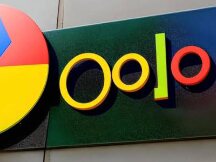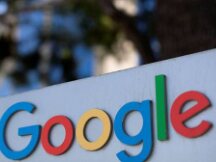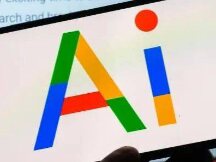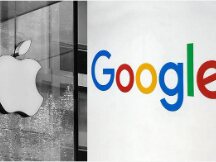What couldn't Google VR be doing in the pre-launch space?
When Microsoft and Facebook renamed Meta brought public attention to the meta world, Google was amazing, but at the same time Google Labs, the lab was poor in R&D and innovation.
The Google Labs restructuring includes existing AR and VR applications, Project Starline (holographic video calls) and Area 120 incubators, and other "capable and sustainable" operations. The new team will be led by Google Senior Vice President Clay Bavor and will report directly to Google CEO Sundar Pichai.
Google, which originally developed AR glasses and sold over 100 million mobile VR boxes worldwide, is expected to bring the wave of the "meta-world", but the truth is, whether it is VR or AR, Google is always "morning". late episode. ”People can't help but wonder why the root cause is that Google is falling behind Facebook in the“ meta-world ”.
"Reverie" on the beach
After Sundar Pichai and several other executives showcased the Smarter Google Assistant at Google's Annual Design Conference in Mountain View, California, USA in May 2016, Clay Bavor took the stage and presented the gossip. . Daydream VR, Google's long-standing VR headset product and platform.
This will be the essence of Clay Bavor. After joining Google for 11 years, the younger brother, who looks like a legitimate farmer to the American actor 'Silicon Valley', finally joined the Google I / O conference as VR director, leader and vice president. level. Speaking small and fast, Bavor introduced the content of the Daydream VR platform to the world.

2016 is another “first year” for virtual reality. Oculus, which was bought by Facebook for $ 2 billion, is still self-employed. We have just started pre-ordering our first customer, the Oculus Rift CV1 (consumer version), which is starting up. I would really like to know if this "desktop" product can outperform the HTC Vive combined by HTC and Valve.
From this perspective, if VR really became the next big computer, it was assumed that most people would assume that the winner would be Google, not Facebook. "Good card." .
Two years before the introduction of Daydream VR, Google created a VR app for people with cardboard boxes and plastic lenses. Following the traditional Google approach, the team developed their own Open Cardboard solution, where anyone can go out and create their own graphic to illustrate the glass box. Some organizations estimate that at least 100 million sets of such glass boxes have been sold worldwide, making it the "first experience" of virtual reality for many people around the world.
At the same time, as the owner of the Android system, Google can upgrade Daydream VR to the lowest level of the system. To enhance mobile phone VR effects, Oculus CTO candidate and expert John Carmack frequently travels to Korea to work with the Samsung team to polish Samsung's VR Gear VR mobile experience a bit.
Externally, brands such as Xiaomi and Lenovo became the first partners, eventually developing phones supporting the Daydream VR platform for Google.
On the content side, Google's YouTube continues to have its own platform and has grown into the world's largest 360-degree video platform. The artists explore the origins of VR imagery.
When it comes to browser tips, Chrome has over 90% of the market share, so Google always strives to support the design and experience of WebVR.
Of course, sometimes a good hand is not the deciding factor in winning.
The Daydream VR headset is very textured, compared to the heavy plastic of previous Oculus and HTC Vive products, the old fabric is tactile and looks like a cheerful jacket usually worn by programmers, it needs it. Play and Know .. The team has done a good job on the content for this product, but what can't be changed is that this is still an update for the VR Glasses Box product. This experience is certainly better than Cardboard, but still does not work with Oculus and Samsung's Gear VR, the latter having reached the pinnacle of mobile VR experience with high-end Samsung phones.

Screenshots of the Daydream VR platform
From an ecological point of view, even companies like Xiaomi and Lenovo show their support in advance, Samsung and Huawei, which have their own VR ambitions, are getting confused, and they have not announced support for the flagship phone. by Daydream VR. first time. Time.
In terms of the content ecosystem, Google has invested heavily in VR video, helping developers develop hardware, software, and algorithms. However, while 360-degree video such as "3-degree-of-freedom" content that viewers can't move may make early adopters shine, it's sadly that users can't live and drink.
In fact, this is also a common problem with mobile phone VR products. You can attract users quickly, but you can't keep them. As of early 2016, the Cardboard app had over 25 million downloads, but the daily user base is still below 0.05%. The same embarrassment occurred on the Daydream platform, and the number of VR apps uploaded to the platform hovered between 1,000 and 5,000 times during the first half of its debut.
Phone booth can't store VR, all-in-one is the future. At the 2017 Google Developers Conference, Bavor revealed that Google is working with Qualcomm to develop an all-in-one VR device. At the time, Oculus was promoting its flagship product, the Oculus Rift CV1, while secretly working with Xiaomi's full three-degree-of-freedom all-in-one Oculus Go VR. Finally, Oculus Go was released in China and the United States, and Mirage VR All-in-One for Google was only developed by Lenovo, but later unknown.
Despite the benefits of the ecosystem, we didn't invest too much and just trusted our partners. All-in-one machine, and the "daydream" has finally exploded.
Temps Google Glass
If Daydream VR is something that Google rejects at all, then Google Glass's failure to become the leader in the AR level has been affected by Google's long political tradition.
At the 2012 developer conference, two years before the Google joke-box VR glasses, Google unveiled its premium product, Google Glass. In hindsight, the single lens prismatic AR glasses solution is already available, but nine years ago they were still very good.
Google Glass almost makes way for AR glasses design and interaction with bone conduction, a side touchpad, and voice control. In 2012, Time magazine named Google Glass the best invention of the year.
Google co-founder Sergey Brin is a Google Glass expert. In early 2012, the Google Glass model appeared on the merger. Brin has appeared several times and worked hard to build power for Google Glass.

It looks good, but Google Glass doesn't have a lot of features. Once connected to your phone, the 640 × 360 pixel prism projection can display simple notifications and information. camera. Take photos and record videos.
At the same time, the $ 1,500 value of Google Glass is only meant to be popular and attractive, and hard to reach the average consumer. I am retiring earlier.
What's happening is Google Glass's front camera.
The Google Glass front camera does not have specific instructions when taking photos or recording videos, so people who see users wearing Google Glass glasses say, "That person is not. is not my photo ". "It is aimed at Europeans and Americans concerned about privacy and portrait rights.

Google Glass front camera | Google Photos
The unrequited love of some geeks for Google Glass has also caused a stir. A photo of tech blogger Robert Scoble bathing in a bathroom with Google Glass actually comes from a mental picture for many. As a result, foreign countries have given Google Glass users a new name, "Glass Hall," and many restaurants have even announced that they will not accept Google Glass users.
A few years later, Snapchat and Facebook announced that glasses-like toys were cheaper than Google glasses. The fact that they were taking pictures made one think it would be better. And most importantly, over the years of indoctrination, people have become familiar with the concepts and features of VR headsets and AR glasses, and it might not be the first time.
Google removed Google Glass less than a year after it went on sale.
The C side was frustrating, but Google Glass started the reverse of the B side. It opened up a whole new horizon for many large companies. 20 billion US dollars. Big decisions are not what they make of them.
innovation and decision making
Even more than 20 years after its inception, Google is still the giant of Silicon Valley and continues to bring world-class AI and driving technology to the world. However, some of Google X Labs' "moon landing projects" were eventually completed and continued.
This is Google's own “innovator's dilemma”. On the other hand, it relies on monopolized search revenue to allow Google to navigate in all directions and, on the other hand, unique products in the minds of Mountain View enthusiasts. Entrepreneurship is quick, but invests in good leadership. if resources are insufficient.
So, we can see that internet users have set up an "online graveyard" for Google to "remember" the hundreds of people who attended the development meetings and gathered hundreds of thousands for millions of users. Eventually, they are killed by the sword. Daydream VR is also one of the lost apps.
On the other hand, if you look at Facebook, almost everyone knows that the $ 2 billion acquisition of Oculus ($ 3 billion to be exact, not counting the hundreds of millions with Zenimax) is totally wrong, but that we must not give up. After being rejected by Oculus, Zuckerberg took over Facebook and continued to invest heavily, even changing the company's name to Meta to herald his vision for virtual reality and augmented reality.
In a sense, Google's new development was defeated by Facebook's decision.
Although Google Labs made adjustments this time around, Clay Baber, one of the heads of the VR department, has taken back control of the lab, but Google VR and AR are just a part of it. The indoor incubator 120 is the hierarchy of the project that led to the experiment.
"I am happy that our work is eternal," said Sundar Pichai in an interview. "We need to prepare our data more than ever."
As the world goes mad about the meta world, Google CEOs still believe that the growth of the business comes from search marketing, not virtual reality or augmented reality.

Scan QR code with WeChat









